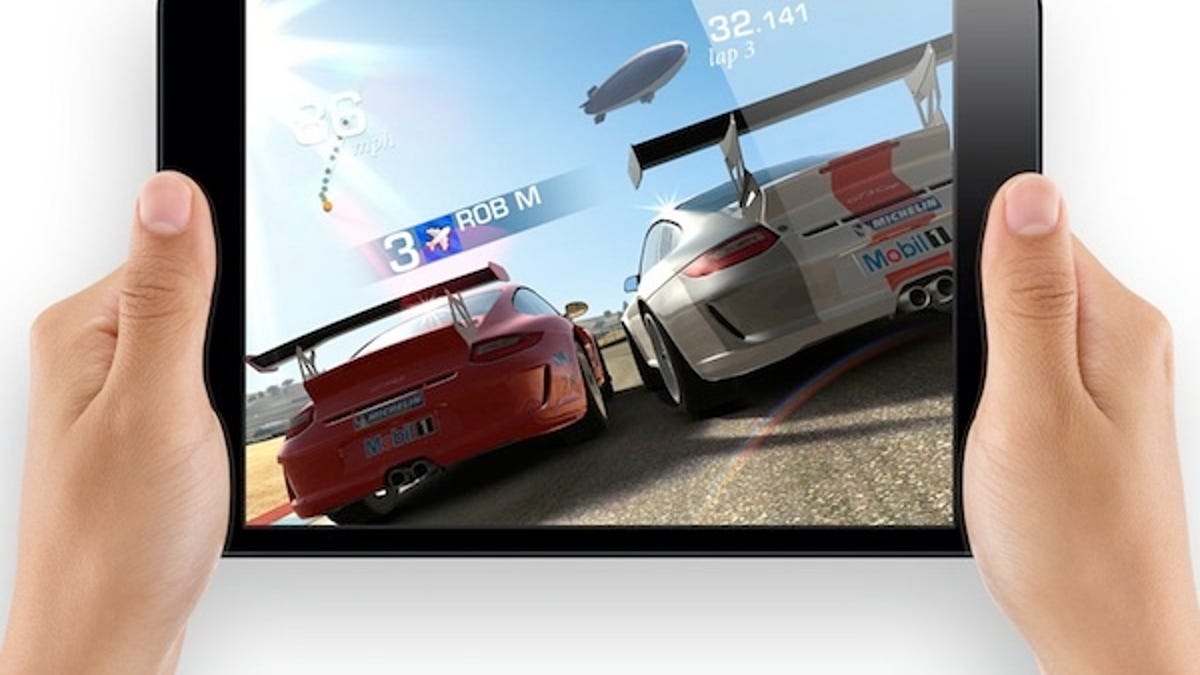iPad 2013: Mini on the rise
The iPad Mini is a first-gen Apple product. So speculation about Act 2 will be rampant in 2013.

Apple appears to have hit another consumer sweet spot with the iPad Mini. So, how much sweeter can it get in 2013?
First, some numbers that point to just how popular the 7.9-inch iPad seems to be. NPD DisplaySearch had originally expected display makers to ship 6 million iPad Mini displays in the fourth quarter of 2012. But last month it quickly upped that estimate to about 12 million.
Though it's not clear if display makers were actually able to ship that many, owing to supply constraints in regard to displays, it's safe to say the Mini's in demand.
What gets better? In a word, the screen.
Punching up the Pixels: The iPad Mini's relatively grainy 1,024x768-pixel resolution display is fine for most people. But at only 163 pixels per inch -- versus 264 pixels per inch for the Retina iPad -- I don't think it's good enough for Apple.
Particularly when the competition is knocking on Apple's door. Amazon's larger Kindle Fire HD achieves 254 pixels per inch in an 8.9 inch display. And Google's popular Nexus 7 offers better resolution than the Mini too.
So, how does Apple up the ante? The conventional wisdom, driven by Asia-based rumors, is that Apple slaps on an eye-popping 2,048x1,536-pixel screen (same pixel count as the 9.7-inch Retina iPad but in a considerably tighter space) and swaps out the A5 chip for a faster A6.
Sounds enticing, but that's a costlier Mini to build than the one that's being sold for a starting price of $329 today. So you may have to pay more for a Retina Mini.
But it would be worth it. For me, the pixel shock -- after using the Retina iPad 4 and a Mini over the last month or so -- isn't so much going from the 4 to the Mini but switching back to the 4's Retina. That display is so obviously superior to the Mini's that it's impossible to put down the 4 sometimes, despite the Mini's ergonomic appeal.
Peppier processor: And here's another reason I keep going back to the iPad 4: it's a lot faster. While there are benchmarks that demonstrate this, I can feel it. After using the Mini -- which isn't slow, by the way -- for a while then picking up the 4, it feels like everything has been turbocharged.
So you can bet that Apple will eventually put the same speedy A6 chip that's in the iPhone 5 and iPad 4 inside the Mini.
And how soon will all of the above happen? That depends on how quickly suppliers can mass produce the prospective Mini's Retina display. My guess is that mass producing a 7.85-inch, 3 million-plus pixel density display that can fit in the current Mini's chassis is a lot harder than people think.
But I'm sure suppliers will let us know via the grapevine how soon this might happen.

